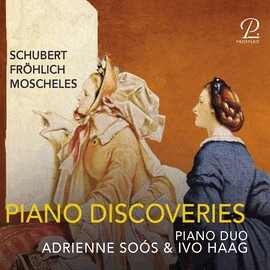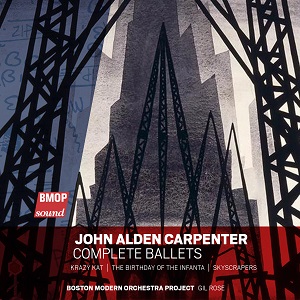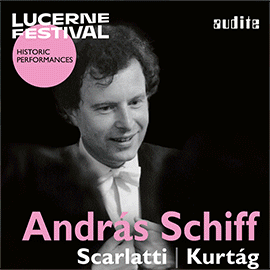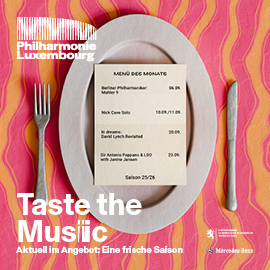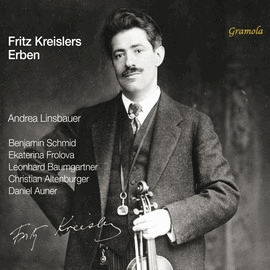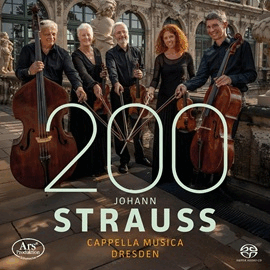Das 100. Album des Boston Modern Orchestra Project (BMOP) unter der Leitung des Dirigenten Gil Rose enthält die komplette Ballettmusik von John Alden Carpenter (1876-1951). Zum ersten Mal werden damit alle drei Ballettmusiken von Carpenter – Crazy Kat, The Birthday of The Infanta und Skyscrapers – in ihrer vollständigen und ursprünglichen Form präsentiert.
Carpenter war einer der ersten amerikanischen Komponisten, der die Bedeutung des Ragtime und später des Jazz erkannte und deren Rhythmen in seinen Kompositionen verwendete. In einem Interview sagte Carpenter, dass es für einen amerikanischen Musiker « eine schwierige, wenn nicht gar schmerzhafte Aufgabe » wäre, das aktuelle amerikanische Leben darzustellen, ohne den Jazz einzubeziehen. « Jazz ist die amerikanische Folklore. Er ist voller Charakter, Schwung und Leben ».
Das erste Stück ist ‘Krazy Kat: A Jazz Pantomime’ aus dem Jahre 1921, das der Komponist 1940 noch einmal überarbeitete. Es fußt auf dem Zeitungscomic von George Herriman, der die Abenteuer einer Katze mit Liebeskummer schildert. Es ist ein einfallsreich komponiertes, äußerst charmantes, teils lyrisches, teils rhythmisch vitales Werk.
Das zweite Werk des Programms ist The Birthday of The Infanta aus dem Jahre 1917, ebenfalls revidiert im Jahre 1940.
Basierend auf einer Kindergeschichte von Oscar Wilde, erzählt The Birthday of The Infanta von der Geburtstagsfeier der spanischen Infantin.
Bei dieser Feier gibt es neben der Präsentation der Schenke durch die Gäste auch Tanzeinlagen, vergleichbar mit denen aus Tchaikovskys Nussknacker. Ein wichtiges Element ist auch der Auftritt des Zwerges, der die Infantin so amüsiert, dass sie ihn noch ein zweites Mal tanzen sehen will, was den Zwerg regelrecht ekstatisch werden lässt, aber in einem verhängnisvollen Tanz tanzt er sich letztlich zu Tode.
Carpenter hat sich in seiner Musik sehr an Wildes Vorlage und ihren Beschreibungen inspiriert, was zu einem Wechsel von charmanter, aber auch wehmütiger und sogar düsterer Musik führt.
Beendet wird das Album durch Carpenters Skyscrapers: A Ballet of Modern American Life, das 1926 an der Metropolitan Opera uraufgeführt wurde, und zwar zwischen zwei kurzen Opern, Puccinis Gianni Schicchi mit Giuseppe De Luca in der Titelrolle sowie Leoncavallos Pagliacci mit Vittorio Fullin und Lawrence Tibbett.
Skyscrapers ist ein Ballett, das die vielen rhythmischen Bewegungen und Klänge des modernen amerikanischen Lebens widerspiegeln soll. Es hat keine Geschichte im üblichen Sinne, sondern geht von der einfachen Tatsache aus, dass sich das amerikanische Leben im Wesentlichen auf den Wechsel von Arbeit und Freizeit reduziert, die jeweils ihren ganz eigenen und typischen rhythmischen Charakter haben.
Die Musik porträtiert Arbeiter, vorbeihuschende Menschenmassen und Menschen in einem Vergnügungspark. Die überwiegend fröhliche Musik alterniert zwischen hektischem Rhythmen, Foxtrott und Musik von Tanzkapellen.
Die drei Partituren werden vom Boston Modern Orchestra Project in hochkarätigen Interpretationen vorgelegt, und man kann sich einerseits nur wundern, dass diese prächtige Musik so lange vergessen war und andererseits, dass sie durch diese Aufnahmen endlich den ihr zustehenden Bekanntheitsgrad bekommt.
The 100th album of the Boston Modern Orchestra Project (BMOP) under the direction of conductor Gil Rose contains the complete ballet music of John Alden Carpenter (1876-1951). This is the first time that all three of Carpenter’s ballet scores – Crazy Kat, The Birthday of The Infanta and Skyscrapers – have been presented in their complete and original form.
Carpenter was one of the first American composers to recognize the importance of ragtime and later jazz and to use their rhythms in his compositions. In an interview, Carpenter said that to represent current American life without incorporating jazz would be, for an American musician, “a difficult, if not a painful task. Jazz is the American folklore. It’s full of character, of pep, of life.”
The first piece is ‘Krazy Kat: A Jazz Pantomime’ from 1921, which the composer reworked in 1940. It is based on the newspaper comic strip by George Herriman, which depicts the adventures of a lovesick cat. It is an imaginatively composed, extremely charming, partly lyrical, partly rhythmically vital work. The second work on the program is The Birthday of The Infanta from 1917, also revised in 1940. Based on a children’s story by Oscar Wilde, The Birthday of The Infanta tells of the birthday celebration of the Spanish Infanta.
At this celebration, in addition to the presentation of the gift by the guests, there are also dance interludes comparable to those in Tchaikovsky’s Nutcracker. An important element is also the appearance of the dwarf, who amuses the Infanta so much that she wants to see him dance a second time, which makes the dwarf downright ecstatic, but in a tragic dance he ultimately dances himself to death. Carpenter’s music is very much inspired by Wilde’s original and its descriptions, which leads to an alternation of charming, but also wistful and even gloomy music.
The album ends with Carpenter’s Skyscrapers: A Ballet of Modern American Life, which premiered at the Metropolitan Opera in 1926, between two short operas, Puccini’s Gianni Schicchi with Giuseppe De Luca in the title role and Leoncavallo’s Pagliacci with Vittorio Fullin and Lawrence Tibbett. Skyscrapers is a ballet designed to reflect the many rhythmic movements and sounds of modern American life. It has no story in the usual sense, but is based on the simple fact that American life is essentially reduced to the alternation of work and leisure, each of which has its own unique and typical rhythmic character.
The music portrays workers, crowds of people scurrying past and people in an amusement park. The predominantly cheerful music alternates between hectic rhythms, foxtrot and music from dance bands.
The three scores are presented by the Boston Modern Orchestra Project in top-class interpretations, and one can only wonder on the one hand that this magnificent music was forgotten for so long and on the other that it is finally receiving the recognition it deserves through these recordings.








